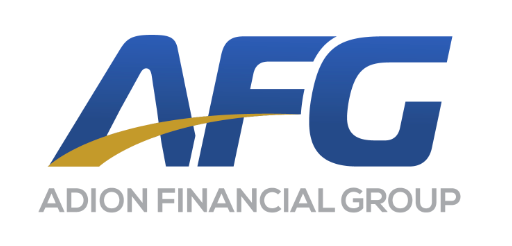Connecticut Millwork and Finish Carpentry Insurance

or call us: (888) 585-5188

Top 3 Recommended Policies
Connecticut’s millwork and finish carpentry sector plays a vital role in the state’s broader manufacturing and construction landscape. With 357 private business establishments operating in the finish carpentry contractors industry as of the third quarter of 2024, the market reflects both opportunity and challenge for contractors and insurers alike. Understanding the specific risks and coverage needs for this niche is essential for business owners aiming to protect their operations while navigating a competitive and evolving environment. This overview explores the current market conditions, common risks, and insurance considerations tailored to Connecticut’s millwork and finish carpentry professionals.
For context on the industry’s size and economic impact, the Connecticut manufacturing sector contributed $34.2 billion to the state’s economy in 2024, accounting for nearly 12% of the total economic output. This highlights the importance of manufacturing-related trades, including carpentry, within the state’s economic fabric Connecticut Business and Industry Association (CBIA).
Current Market Landscape for Finish Carpentry in Connecticu
The finish carpentry industry in Connecticut is part of a larger national and global market that continues to grow, though with some regional variations. Nationally, the U.S. carpentry market is valued at $44.2 billion in 2025, with over 224,000 carpentry businesses competing for market share. This competitive landscape demands that Connecticut contractors maintain high standards of craftsmanship and operational efficiency to thrive Amra And Elma LLC.
Despite these opportunities, the Connecticut carpentry industry faces a projected decline at an annualized rate leading to a market size of $434.6 million by 2025. This decline reflects broader challenges such as labor shortages and rising operational costs. In fact, 82% of Connecticut manufacturers reported difficulty finding and retaining skilled workers in 2024, with skills gaps identified as the top barrier. This shortage directly impacts finish carpentry businesses, which rely heavily on skilled craftsmanship for quality millwork and detail-oriented projects CBIA Workforce Report.
Economic Pressures and Workforce Challenges
Cost pressures are another significant factor shaping the finish carpentry market in Connecticut. In 2024, 95% of manufacturers reported rising costs driven by labor, healthcare, and energy expenses. These increases affect profit margins and can influence insurance needs, especially regarding workers compensation and liability coverage. Additionally, 87% of manufacturers noted increased costs of doing business due to state mandates and taxes, further complicating financial planning for small and mid-sized carpentry firms.
Labor challenges extend beyond availability. With 27% of Connecticut manufacturers integrating artificial intelligence technologies into their operations, there is a clear push toward automation and efficiency. However, finish carpentry remains a craft that demands hands-on expertise, making workforce retention and training critical concerns for business continuity and risk management. The industry is now exploring partnerships with local trade schools and community colleges to create apprenticeship programs aimed at attracting younger talent and bridging the skills gap. These initiatives not only provide students with valuable on-the-job experience but also help companies secure a pipeline of skilled workers who are familiar with the latest tools and techniques in finish carpentry.
Moreover, the evolving consumer preferences for sustainable and eco-friendly materials are influencing the finish carpentry market as well. Many homeowners are increasingly seeking out environmentally responsible options, prompting contractors to adapt their practices and materials accordingly. This shift towards sustainability not only aligns with broader societal trends but also opens new avenues for innovation within the industry. As a result, finish carpentry businesses are beginning to invest in training their workforce on sustainable practices and sourcing materials that minimize environmental impact, ensuring they remain competitive in a market that values both quality and responsibility.

Key Risks Facing Millwork and Finish Carpentry Contractors
Millwork and finish carpentry contractors encounter a unique set of risks that insurance coverage must address. These risks range from physical job site hazards to contractual liabilities and property damage.
Job Site Hazards and Workers Compensation
Carpentry work involves the use of power tools, heavy materials, and elevated work areas, all of which contribute to a higher risk of injury. Connecticut’s manufacturing sector employs over 153,600 people, many of whom face these physical hazards daily. For finish carpentry contractors, workers compensation insurance is essential to cover medical expenses and lost wages resulting from workplace injuries.
Given the average wage for construction carpenters in the U.S. is $29 per hour, the financial impact of injuries can be substantial. Proper coverage helps protect both employees and employers from the potentially devastating costs associated with accidents. Moreover, implementing robust safety training programs and regular equipment maintenance can further mitigate risks, ensuring a safer work environment while potentially lowering insurance premiums over time.
Liability and Property Damage
Finish carpentry projects often involve working in occupied buildings or on client properties. Mistakes or accidents can lead to property damage or bodily injury claims. General liability insurance provides a safety net against such claims, covering legal fees and settlements if the contractor is found liable.
Additionally, contractors must consider coverage for tools and equipment, which represent significant investments. Theft, loss, or damage to these assets can disrupt operations and incur replacement costs. Specialized policies or endorsements can ensure these valuable tools are protected. Furthermore, contractors may also want to explore business interruption insurance, which can provide financial support during periods when operations are halted due to unforeseen events, such as natural disasters or significant accidents on-site.
Contractual and Professional Risks
Millwork projects frequently involve detailed contracts specifying materials, timelines, and quality standards. Disputes over workmanship or delays can expose contractors to financial liability. Professional liability insurance, sometimes called errors and omissions coverage, offers protection against claims arising from alleged negligence or failure to meet contractual obligations.
In addition to insurance, maintaining clear communication with clients throughout the project lifecycle is crucial in managing expectations and minimizing disputes. Regular updates and documentation of progress can serve as vital evidence should disagreements arise. Furthermore, investing time in understanding local building codes and regulations can help contractors avoid legal pitfalls and ensure compliance, thereby enhancing their professional reputation and reducing the risk of costly litigation.
Insurance Coverage Options for Connecticut Finish Carpentry Businesses
Choosing the right insurance portfolio is critical for millwork and finish carpentry contractors to manage risks effectively. Several coverage types are particularly relevant in Connecticut’s market.
General Liability Insurance
This foundational coverage protects against third-party claims for bodily injury and property damage. For finish carpentry contractors, general liability insurance is indispensable given the nature of their work environments and client interactions. It not only covers legal fees and settlements but also helps maintain a contractor's reputation, as clients often seek assurance that their projects are in safe hands. Additionally, many clients may require proof of general liability insurance before awarding contracts, making it a crucial component of any contractor's business strategy.
Workers Compensation Insurance
Required in Connecticut for businesses with employees, workers compensation covers medical treatment and lost wages for work-related injuries. With the physical demands of carpentry, this coverage is a must-have to comply with state laws and safeguard workers. Beyond legal compliance, offering workers compensation can enhance employee morale and retention, as workers feel valued and protected. Furthermore, it can help contractors attract skilled labor, as many professionals prefer to work for companies that prioritize their health and safety.
Commercial Property Insurance
Protecting tools, equipment, and business premises, commercial property insurance helps contractors recover from losses due to theft, fire, or natural disasters. Given the value of specialized millwork tools, this coverage reduces financial vulnerability. In Connecticut, where severe weather can lead to unexpected damage, having commercial property insurance is particularly prudent. This insurance not only covers physical assets but can also extend to loss of income due to property damage, ensuring that contractors can maintain their financial stability during challenging times.
Professional Liability Insurance
Also known as errors and omissions insurance, this protects against claims of inadequate work or failure to meet contractual terms. It is particularly useful for finish carpentry contractors who provide design consultations or custom millwork solutions. In an industry where client expectations can be high, having this coverage can provide peace of mind. It allows contractors to focus on delivering quality work without the constant worry of potential legal repercussions, fostering a more creative and productive work environment.
Business Interruption Insurance
Unexpected events such as severe weather or supply chain disruptions can halt operations. Business interruption insurance covers lost income during these periods, helping contractors stay afloat while recovering. This coverage is especially vital in Connecticut, where seasonal storms can lead to significant downtime. By ensuring that they have this safety net, contractors can better manage their cash flow during periods of inactivity, allowing them to invest in future projects and maintain their workforce without interruption. Additionally, this insurance can cover ongoing expenses, such as rent and utilities, even when business operations are temporarily suspended, further stabilizing the financial health of the business.
Trends Shaping Coverage Needs in 2024 and Beyond
The finish carpentry industry in Connecticut is evolving alongside broader manufacturing trends. Profitability among Connecticut manufacturers improved from 63% in 2023 to 70% in 2024, signaling cautious optimism despite rising costs and workforce challenges CBIA Profitability Report.
However, 45% of manufacturing executives viewed the state’s business climate as declining, reflecting concerns about regulatory burdens and economic uncertainty. These factors influence insurance purchasing decisions, with contractors seeking policies that offer flexibility and comprehensive protection. As the market shifts, contractors are increasingly looking for coverage that not only meets their current needs but also adapts to the evolving landscape of risks associated with new technologies and methods.
Technology Integration and Risk Management
With 27% of Connecticut manufacturers adopting artificial intelligence in operations, there is increasing potential for technology to reduce risks related to safety and efficiency. For finish carpentry contractors, integrating technology such as project management software or safety monitoring tools can complement insurance coverage by preventing claims before they occur. Additionally, the use of drones for site inspections and augmented reality for project visualization can enhance precision and reduce the likelihood of costly errors, thereby mitigating risk and potentially lowering insurance premiums.
Workforce Development and Retention
Given the difficulty in finding skilled labor, contractors may invest more in training and retention programs. Insurance providers might offer incentives or tailored policies that support these initiatives, recognizing that a well-trained workforce reduces injury rates and liability exposure. Furthermore, as the demand for skilled trades continues to rise, companies that prioritize workforce development may also find themselves more competitive in attracting talent. By fostering a culture of continuous learning and professional growth, contractors can not only enhance their operational efficiency but also build a loyal team that is committed to the company’s long-term success.
Moreover, as the industry grapples with an aging workforce, innovative recruitment strategies are becoming essential. Collaborating with local trade schools and community colleges can create a pipeline of new talent, while apprenticeship programs can provide hands-on experience and mentorship. These efforts not only help to fill immediate labor gaps but also contribute to the overall sustainability of the industry, ensuring that the next generation of finish carpenters is equipped with the skills needed to thrive in an increasingly complex market.

Before You Go: What Finish Carpentry Contractors Should Keep in Mind
Protecting a millwork or finish carpentry business in Connecticut requires a thoughtful approach to insurance that balances cost with comprehensive coverage. Understanding the specific risks—from job site injuries to contractual disputes—helps contractors choose policies that safeguard their livelihood.
Regularly reviewing coverage in light of changing market conditions and operational shifts is essential. With rising costs and workforce challenges, maintaining open communication with insurance providers ensures policies remain aligned with business needs.
Finally, leveraging industry data and insights, such as the steady growth of the global finish carpentry contractors market and the evolving economic landscape in Connecticut, can guide strategic decisions for risk management and insurance planning The Business Research Company.
In addition to insurance considerations, finish carpentry contractors should also prioritize the importance of safety training for their teams. Regular workshops and training sessions can significantly reduce the risk of accidents on job sites, which not only protects workers but also minimizes potential liability claims. By fostering a culture of safety, contractors can enhance their reputation and build trust with clients, which is invaluable in a competitive market.
Moreover, staying updated with local building codes and regulations is crucial for compliance and operational success. Connecticut's regulations can change, and being proactive about these updates helps contractors avoid costly fines and project delays. Engaging with local trade associations or attending industry conferences can provide valuable insights into best practices and regulatory changes, further solidifying a contractor's position in the market.
Frequently Asked Questions
Q: Is workers compensation insurance mandatory for finish carpentry contractors in Connecticut?
A: Yes. Connecticut law requires businesses with employees to carry workers compensation insurance to cover work-related injuries.
Q: What types of liability insurance should a finish carpentry business consider?
General liability insurance is essential, and professional liability insurance may be necessary if the business offers design or consulting services.
Q: How can finish carpentry contractors manage rising operational costs?
Contractors can review and adjust their insurance policies, invest in workforce training to reduce injuries, and explore technology solutions to improve efficiency.
Q: Are there insurance options that cover tools and equipment?
Yes. Commercial property insurance or specific equipment coverage can protect valuable tools from theft, loss, or damage.
Q: How does the labor shortage affect insurance for carpentry businesses?
Labor shortages increase the risk of hiring less experienced workers, which can raise injury rates and liability claims, making comprehensive insurance coverage even more important.
Q: Can business interruption insurance help finish carpentry contractors?
Absolutely. This coverage helps replace lost income during unexpected shutdowns, such as severe weather or supply chain delays.
Q: How is technology influencing risk management in finish carpentry?
Adopting project management and safety monitoring tools can reduce accidents and improve operational efficiency, complementing insurance protections.
Contact Us
Phone
Locations
Connecticut Location
703 Hebron Ave., 3rd Floor, Glastonbury, CT 06033
North Carolina Location
436 East 36th St., Charlotte, NC 28205

